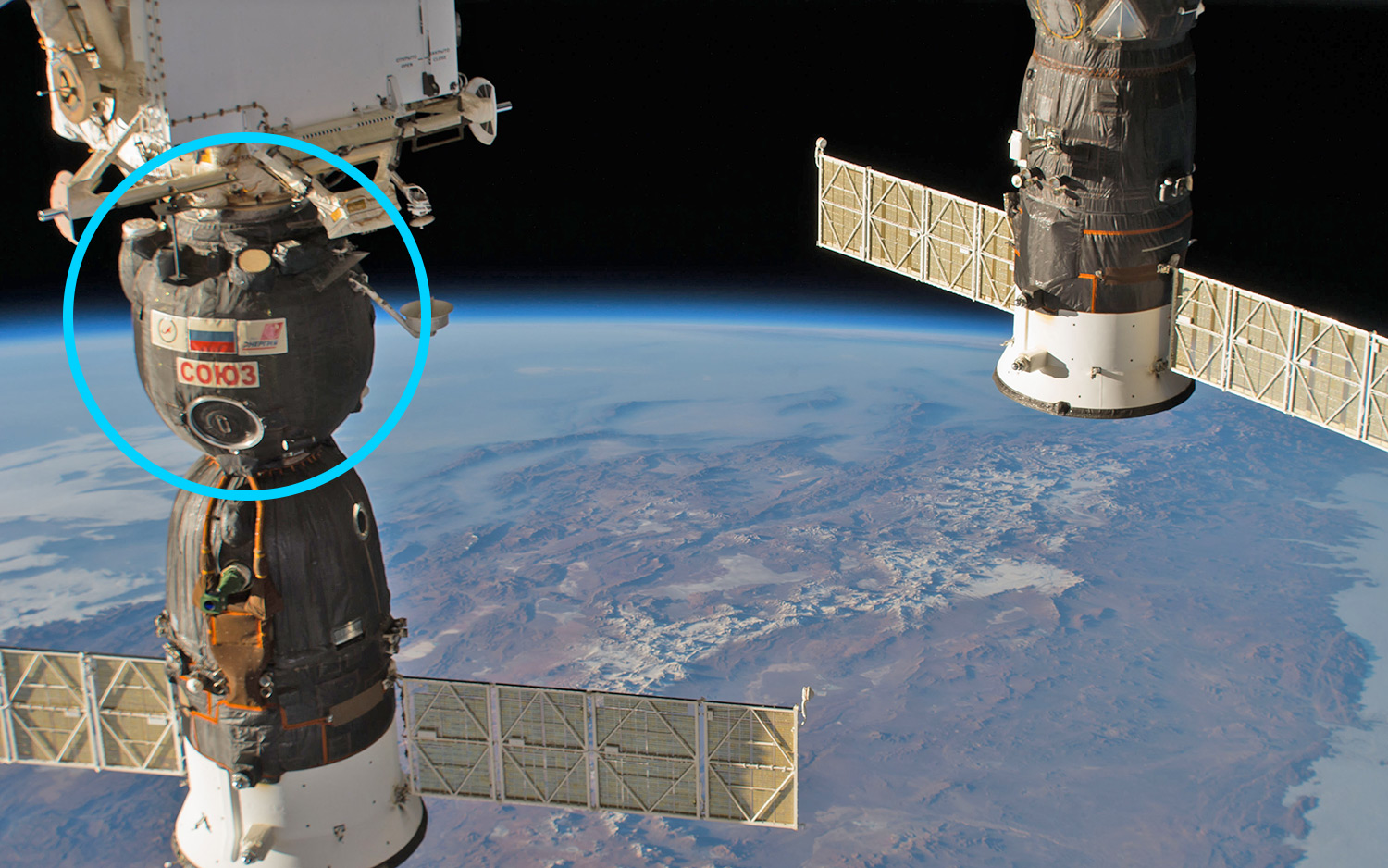The leader of the current mission aboard the International Space Station (ISS) is hitting back against the suggestion that he or one of his crewmates might have caused the orbiting lab's recent air leak.
"I can unequivocally say that the crew had nothing do with this," NASA astronaut Drew Feustel, commander of the ISS' Expedition 56, said during a space-to-ground interview with ABC News, Florida Today reported yesterday (Sept. 11). "I think it's absolutely a shame and somewhat embarrassing that anybody is wasting any time talking about something that the crew was involved in."
The leak story has taken quite a few twists and turns over the past few weeks, so let's start at the beginning. [Russia's Crewed Soyuz Space Capsule Explained (Infographic)]
On the night of Aug. 29, ISS controllers on the ground noticed a slight pressure drop aboard the orbiting outpost. They notified the crew the next day, and the space flyers quickly traced the problem to a small hole in a Russian Soyuz spacecraft docked to the orbiting lab.

Cosmonaut Sergey Prokopyev, the commander of the Soyuz, patched the 2-millimeter (0.08 inches) hole using epoxy and gauze on Aug. 30, apparently solving the problem. The Expedition 56 crew was never in any danger, NASA officials have stressed.
Russian space officials soon formed a commission to investigate the leak and its cause. And last week, Dmitry Rogozin — the head of Russia's federal space agency, Roscosmos — announced that the breach in the Soyuz wall was a drill hole. The person who made the hole apparently had "a faltering hand," Rogozin added, citing nearby scuff marks that likely resulted when the drill slipped.
Rogozin further vowed that officials would determine whether the hole was drilled intentionally or by accident, "either on Earth or in space."
Get the Space.com Newsletter
Breaking space news, the latest updates on rocket launches, skywatching events and more!
It's this last bit — the implication that Expedition 56 crewmembers might be responsible — that apparently raised Feustel's ire.
In his interview with ABC News, Feustel urged ISS managers on the ground to figure out exactly what happened, saying that "the implications are enormous to the whole space program." And he praised the Expedition 56 crew for its handling of a tough situation.
"I can't say enough about the performance of the crew, how we reacted, how we responded, how we stayed together and continued to work as a team, just as we always have, to ensure the safety of ourselves, the safety of the spacecraft, and the assurance of the mission priorities," Feustel said, according to Florida Today.
The hole was in the upper "orbital module" of the Soyuz, which arrived at the ISS in June. The spacecraft is scheduled to depart the ISS in December, carrying Prokopyev, NASA astronaut Serena Auñón-Chancellor and European Space Agency astronaut Alexander Gerst back down to Earth. The hole shouldn't be a problem on this return trip, NASA officials have said. (Soyuz orbital modules are designed to burn up in Earth's atmosphere.)
Soyuz spacecraft have been ISS crewmembers' only ride to and from orbit since NASA retired its space shuttle fleet in 2011. However, private space taxis being developed by SpaceX and Boeing should be ready to start taking on some of that responsibility soon; both vehicles are scheduled to begin crewed test flights next year.
Follow Mike Wall on Twitter @michaeldwall and Google+. Follow us @Spacedotcom, Facebook or Google+. Originally published on Space.com.
Join our Space Forums to keep talking space on the latest missions, night sky and more! And if you have a news tip, correction or comment, let us know at: community@space.com.

Michael Wall is a Senior Space Writer with Space.com and joined the team in 2010. He primarily covers exoplanets, spaceflight and military space, but has been known to dabble in the space art beat. His book about the search for alien life, "Out There," was published on Nov. 13, 2018. Before becoming a science writer, Michael worked as a herpetologist and wildlife biologist. He has a Ph.D. in evolutionary biology from the University of Sydney, Australia, a bachelor's degree from the University of Arizona, and a graduate certificate in science writing from the University of California, Santa Cruz. To find out what his latest project is, you can follow Michael on Twitter.








